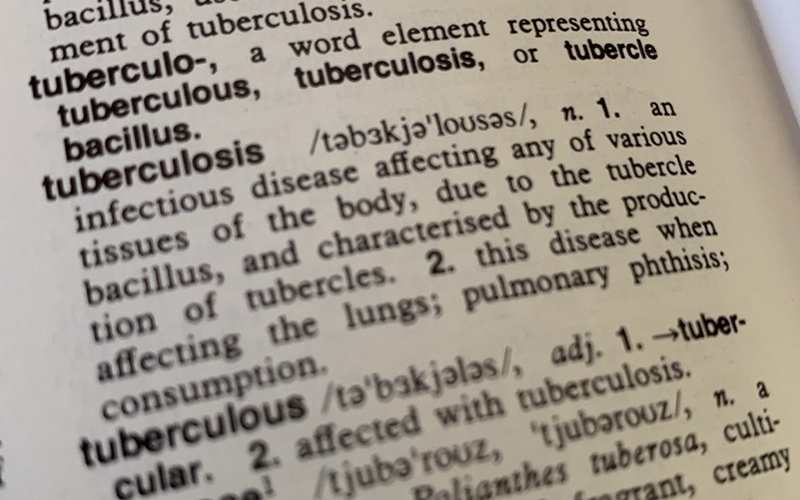Search
Research
Ecological-level factors associated with tuberculosis incidence and mortality: A systematic review and meta-analysisGlobally, tuberculosis (TB) is the leading infectious cause of morbidity and mortality, with the risk of infection affected by both individual and ecological-level factors. While systematic reviews on individual-level factors exist, there are currently limited studies examining ecological-level factors associated with TB incidence and mortality. This study was conducted to identify ecological factors associated with TB incidence and mortality.
Research
Mapping tuberculosis prevalence in Africa using a Bayesian geospatial analysisWorldwide, tuberculosis (TB) remains the leading cause of death from infectious diseases. Africa is the second most-affected region, accounting for a quarter of the global TB burden, but there is limited evidence whether there is subnational variation of TB prevalence across the continent. Therefore, this study aimed to estimate sub-national and local TB prevalence across Africa.
Research
Mapping residual malaria transmission in VietnamVietnam, as one of the countries in the Greater Mekong Subregion, has committed to eliminating all malaria by 2030. Declining case numbers highlight the country's progress, but challenges including imported cases and pockets of residual transmission remain. To successfully eliminate malaria and to prevent reintroduction of malaria transmission, geostatistical modelling of vulnerability (importation rate) and receptivity (quantified by the reproduction number) of malaria is critical.
Research
Predictors of poor treatment outcomes among drug-resistant tuberculosis patients in Hunan province, ChinaDrug-resistant tuberculosis (DR-TB) is a significant public health concern, often resulting in poor treatment outcomes. This study aims to identify predictors of poor treatment outcomes among patients with DR-TB in Hunan Province, China.

News & Events
Prevention better than cure in race to slash rates of TBThe first global review of the effectiveness of current strategies to fight tuberculosis has found preventive therapy is the most effective intervention strategy.
Research
The prevalence of tuberculosis, malaria and soil-transmitted helminth infection in minority indigenous people of Southeast Asia and the Western Pacific: protocol for a systematic review and meta-analysisInfectious diseases such as tuberculosis (TB), malaria and soil-transmitted helminthiasis continue to impose a significant global health burden and socio-economic impact. Globally, minority indigenous people are disproportionately affected by poverty and are shown to experience a disparate burden of disease and poorer health outcomes than the comparative majority population.
Research
Estimating measures to reduce the transmission of SARS-CoV-2 in Australia to guide a ‘National Plan’ to reopeningThe availability of COVID-19 vaccines promised a reduction in the severity of disease and relief from the strict public health and social measures (PHSMs) imposed in many countries to limit spread and burden of COVID-19. We were asked to define vaccine coverage thresholds for Australia's transition to easing restrictions and reopening international borders.
Research
Population-Modifiable Risk Factors Associated With Childhood Stunting in Sub-Saharan AfricaIdentifying modifiable risk factors associated with childhood stunting in sub-Saharan Africa (SSA) is imperative for the development of evidence-based interventions and to achieve the Sustainable Development Goals. The objective was to evaluate key modifiable risk factors associated with childhood stunting in SSA.
Research
Prognostication of treatment non-compliance among patients with multidrug-resistant tuberculosis in the course of their follow-up: a logistic regression–based machine learning algorithmDrug compliance is the act of taking medication on schedule or taking medication as prescribed and obeying other medical instructions. It is the most crucial aspect in the treatment of chronic diseases particularly for patients with multidrug-resistant tuberculosis (MDR-TB). Drug non-compliance is the main reason for causing drug resistance and poor treatment outcomes.
Research
Spatial co-distribution of tuberculosis prevalence and low BCG vaccination coverage in EthiopiaWhile bacille-calmette-guerin (BCG) vaccination is one of the recommended strategies for preventing tuberculosis, its coverage is low in several countries, including Ethiopia. This study investigated the spatial co-distribution and drivers of TB prevalence and low BCG coverage in Ethiopia.
